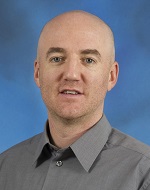The primary objective of this project was to improve the City of Pittsburgh’s greenhouse gas inventory process. Mike Blackhurst and Inês Azevedo were chosen by the City of Pittsburgh lead, Ari Lattanzi, to collaborate with them to improve the City’s semi-annual greenhouse gas inventory and inform the development of its third climate action plan (CAP) as it pursues a 20% reduction of CO2 emissions from 2003 levels by 2023. The project team was later joined by Sarah Yeager.
The Pittsburgh, PA-TEX project on “Improving Greenhouse Gas Inventories” was completed in December 2016. To accomplish the project’s objectives, the team coordinated for four months to achieve two goals: standardizing data acquisition and delivery, and producing an uncertainty analysis. To achieve its first goal, the project team coordinated with local utilities to develop data-sharing agreements, enabling the city to receive the same data year-to-year in a consistent format on a set timetable, thus streamlining the greenhouse gas inventory process. The high-resolution data acquired will enable more accuracy and accountability as the city pursues carbon mitigation initiatives.
While the City’s data acquisition process was improved through these efforts, there nevertheless will remain uncertainty in the data used to produce the greenhouse gas inventory. The team performed a one-way sensitivity analysis on the inputs supplied to Pittsburgh’s previous greenhouse gas inventory in 2013. This analysis provides insight into the dominant sources of uncertainty and variability and the influence of external emissions, thus enabling the city to prioritize future data collection efforts around those major sources. The City can now also explore implications of mitigation activities and can communicate and summarize uncertainty in public communication and decision-making contexts.
This shift in thinking about emissions reductions – from deterministic measurements to probabilistic methods – makes for a more transparent and realistic assessment of progress in mitigating emissions. By applying the probabilistic method supported by the uncertainty analysis model produced through this collaboration, Pittsburgh is able to assess what uncertainty is meaningful and whether uncertainty is decreasing over time, and determine whether an observed reduction is significant or within a margin of error. The analysis found that the largest sources of uncertainty are electricity emissions, heating and cooling degree days, and transportation factors including fuel economy and miles driven for gas-powered passenger vehicles and light trucks, and diesel-powered heavy vehicles.
In reflecting on the project and its outcomes, Sarah expressed that the TEX project’s scope of work has shaped the City’s thinking regarding its forthcoming Climate Action Plan and their climate mitigation plans moving forward. The City’s additional clarity regarding carbon emission sources and its adoption of this approach to measuring and accounting for uncertainty will be reflected in the Climate Action Plan, specifically regarding approaches to measuring and tracking emissions.
The project concluded the following:
- There is value in revising how greenhouse gas emissions reduction goals are framed, including efforts to decrease uncertainty in data collection and to communicate unavoidable uncertainties.
- Probabilistic calculations allow for better understanding of available data and how to improve quality moving forward
The team learned a few key lessons:
- Sometimes staffing changes in a city can result in adjustments to the composition of a project team. When that happens, it is essential that the team make sure their new partner is fully brought up to speed, and that they open themselves to adjusting the framework for communication and delegation to include their new partner. If the new individual is able to shadow the outgoing partner for a period of time, this can support the transition. Meanwhile, to the extent that an outgoing partner is able to remain engaged with the project, their contributions and insights are extremely valued.
- Even after the project is well underway, it is important to continue to revisit the project goal and each individual’s role. Taking the time over the course of the project to reflect on roles, objectives and communication can ensure continued success by bringing to light any concerns or issues that may not be voiced otherwise.
If you are interested in learning more about the specifics of this project and how you might replicate this methodology in your own community, please contact Mike Blackhurst, Research Development Manager, University of Pittsburgh University Center for Social & Urban Research, Inês Azevedo, Associate Professor of Engineering and Public Policy, Carnegie Mellon University, or Sarah Yeager, Sustainability Office, City of Pittsburgh.
You can also read more about the Pittsburgh, PA-TEX project on the poster and PowerPoint slides presented by Ari and Sarah at the American Geophysical Union Fall Meeting in December 2016. A white paper outlining the methodology applied for this project and a downloadable version of the uncertainty model will be available on the TEX project page at a later date.



 Sarah Yeager is the Student Conservation Association Green Cities Fellow with the City of Pittsburgh’s Office of Sustainability. She is working to benchmark utility use and reduce greenhouse gas emissions, specifically within Pittsburgh’s building sector. With the Office of Sustainability, Sarah works on a multitude of projects that aim to improve energy efficiency both in City operations but also in the greater Pittsburgh area. She is also assisting the completion of Pittsburgh’s third climate action plan and an updated greenhouse gas inventory for the City. As a graduate of Saint Francis University Sarah has a B.S. in Environmental Engineering with a concentration in water systems and sustainable design.
Sarah Yeager is the Student Conservation Association Green Cities Fellow with the City of Pittsburgh’s Office of Sustainability. She is working to benchmark utility use and reduce greenhouse gas emissions, specifically within Pittsburgh’s building sector. With the Office of Sustainability, Sarah works on a multitude of projects that aim to improve energy efficiency both in City operations but also in the greater Pittsburgh area. She is also assisting the completion of Pittsburgh’s third climate action plan and an updated greenhouse gas inventory for the City. As a graduate of Saint Francis University Sarah has a B.S. in Environmental Engineering with a concentration in water systems and sustainable design. Ariel Lattanzi is working to update Pittsburgh’s greenhouse gas inventory protocols and data collection in order to guide ambitious emission reduction targets and actions in Pittsburgh’s third Climate Action Plan. As the Resilience Analyst in Pittsburgh’s Office of Sustainability, Ariel manages data to improve City operations, such as fleet electrification and recycling collection. She also supports the development of the Resilient Pittsburgh Strategy that will coordinate resources and programs to reduce chronic stresses such as poor air quality and prevent acute shocks such as hazardous materials incidents. A graduate of Middlebury College, Ariel designed, engineered and built a net zero solar powered home for the DOE 2013 Solar Decathlon. Ariel has a background in sustainable architecture and construction, natural resource planning, emergency management and response, and public health.
Ariel Lattanzi is working to update Pittsburgh’s greenhouse gas inventory protocols and data collection in order to guide ambitious emission reduction targets and actions in Pittsburgh’s third Climate Action Plan. As the Resilience Analyst in Pittsburgh’s Office of Sustainability, Ariel manages data to improve City operations, such as fleet electrification and recycling collection. She also supports the development of the Resilient Pittsburgh Strategy that will coordinate resources and programs to reduce chronic stresses such as poor air quality and prevent acute shocks such as hazardous materials incidents. A graduate of Middlebury College, Ariel designed, engineered and built a net zero solar powered home for the DOE 2013 Solar Decathlon. Ariel has a background in sustainable architecture and construction, natural resource planning, emergency management and response, and public health.
 Dr. Mike Blackhurst is the Research Development Manager at the University of Pittsburgh’s University Center for Urban and Social Research. In this role, Mike collaborates with and connects academics, community organizations, and public agencies to identify data needs, articulate research questions, and motivate research resources around topics with community relevance. Mike enjoys research driven by policy relevance, particularly domains driven or influenced by communities, and has had the pleasure of serving on several local committees and boards in the Pittsburgh, PA and Austin, TX regions. He was recently invited to serve as a Pittsburgh area Science Ambassador for the National Academy of Sciences and the National Academy of Engineering. Mike has a PhD in Engineering and Public Policy from Carnegie Mellon University.
Dr. Mike Blackhurst is the Research Development Manager at the University of Pittsburgh’s University Center for Urban and Social Research. In this role, Mike collaborates with and connects academics, community organizations, and public agencies to identify data needs, articulate research questions, and motivate research resources around topics with community relevance. Mike enjoys research driven by policy relevance, particularly domains driven or influenced by communities, and has had the pleasure of serving on several local committees and boards in the Pittsburgh, PA and Austin, TX regions. He was recently invited to serve as a Pittsburgh area Science Ambassador for the National Academy of Sciences and the National Academy of Engineering. Mike has a PhD in Engineering and Public Policy from Carnegie Mellon University.